There are more than 1,200 species of bats in the world, and they come in a variety of shapes and sizes. The largest bat is the giant golden-crowned flying fox, which has a wingspan of up to six feet. Other large bats include the fruit bats, such as the Rodrigues fruit bat and the Egyptian fruit bat, which both have wingspans of up to five feet.
The largest member of the vesper bat family is the great evening bat, with a wingspan of up to four and a half feet. While most bats are small, there are some that are quite large. The 10 largest bats in the world are:
1. Giant golden-crowned flying fox (Acerodon jubatus) – Wingspan up to 6 ft (1.8 m) 2. Rodrigues fruit bat (Pteropus rodricensis) – Wingspan up to 5 ft 10 in (1.8 m) 3. Egyptian fruit bat (Rousettus aegyptiacus) – Wingspan up to 5 ft 8 in (1.7 m)
4. Great evening bat (Ia io) – Wingspan up to 4 ft 6 in (1.4 m) 5.”Vampire” false Vampire Bat(Diaemus youngi)-Wingspan 3ft 11in(120cm ) 6.”Common” Vampire Bat(Desmodus rotundus)-Wingspan 3ft 9in(114cm )
There are more than 1,200 species of bats in the world, but only a handful of those are considered to be large. Here are ten of the largest bats in the world, based on their wingspan. 1. The Great Flying Fox (Pteropus neohibernicus) is the largest bat in the world, with a wingspan that can reach up to six feet.
These massive bats are found in Australia and New Guinea. 2. The Philippine Flying Fox (Acerodon jubatus) is another giant bat, with a wingspan that can reach up to five and a half feet. These bats are found on several islands in Southeast Asia.
3. The Indian flying fox (Pteropus giganteus) has a maximum wingspan of five feet and is found throughout India and Sri Lanka. 4. The Malayan flying fox (Pteropus vampyrus) is one of the largest members of its genus, with a wingspan that reaches four and a half feet at most. These bats are found across Southeast Asia.
5.-7. Three different species of fruit bat share the fifth spot on this list: The Mauritian flying fox (Pteropus niger), Seychelles flying fox (Pteropus seychellensis), and Egyptian fruit bat (Rousettus aegyptiacus). All three species have maximum wingspans of just over four feet.
These fruit bats are found on various islands in the Indian Ocean as well as parts of Africa. None of these three species is considered endangered at this time, although all three have declined in population due to habitat loss. 8.-10.
Finally, rounding out our list of ten largest bats in the world, we have three more fruit bat species : The greater short-nosed fruit bat(Cynopterus sphinx), which has a max wingspan just shy of four feet; the spectacled flying fox or greater false vampire bat(Pseudonymously vampyrus) ,with similar dimensions; and finally, the black-flying fox or common fig-eating bat(Pteopodidae fuliginosa ) , which has been recorded with a slightly smaller max wingspan of around 3½feet. All three of these bats are found in various parts of less distributed locations across Asia and Austral Asia.
Table of Contents
What is the Biggest Bat in the World
There are many different types of bats found all over the world, but which one is the biggest? The answer may surprise you. The biggest bat in the world is actually the giant golden-crowned flying fox.
This massive bat has a wingspan of up to six feet and can weigh up to four pounds! That’s about as big as a small dog! Despite their size, these gentle giants are fruit eaters and help to pollinate plants.
They are found in tropical forests in Southeast Asia where they roost in trees during the day and come out at night to feed. Sadly, they are considered endangered due to habitat loss and hunting. So, next time you see a bat, remember that not all of them are small creatures of the night.
Some, like the giant golden-crowned flying fox, are quite impressive!
Images of the Biggest Bat in the World

Largest Bat in North America
The largest bat in North America is the Myotis lucifugus, or the little brown bat. It is a member of the vesper bat family and can be found in Canada, the United States, Mexico, and Central America. The little brown bat is one of the most common bats in North America and is considered to be a medium-sized bat.
It has a body length of 3.3-4.1 inches and a wingspan of 9.8-11 inches. The little brown bat weighs between 0.14-0.37 ounces and typically lives for around 19 years in captivity. The little brown bat is nocturnal and hibernates during the winter months.
It roosts in trees, caves, or other sheltered areas during the day and emerges at night to hunt for insects. The little brown bat uses echolocation to navigate and find its prey; it emits high-pitched sounds that bounce off objects and return to the bat as echoes. These echoes help the little brown bat determine the location, size, shape, and speed of objects nearby—including insects flying through the air!
In terms of reproduction, femalelittle brown bats give birth to 1-5 offspring per year (usually 2-3). The young are born blind and deaf but grow quickly; they are able to fly within 4-6 weeks after birth! After mating season (which occurs during fall), male bats typically leave maternity colonies while females stay put with their young until springtime arrives again—at which point they will all emerge from hibernation together.
Largest Bat in South America
Flying Fox
Flying foxes are among the largest of the bat species. Their wingspans can range from 1.5 to 2.5 feet, and their bodies can grow up to one foot long. As their name suggests, flying foxes are members of the fox family, which also includes wolves, jackals, and dogs.
These nocturnal creatures are found in tropical forests around the world, where they use their powerful sense of smell to hunt for fruit, nectar, and pollen. Despite their size and impressive hunting skills, flying foxes are gentle animals that live in large colonies. They are very social creatures that groom each other and often share food.
When they aren’t eating or grooming, flying foxes like to hang out in trees near water sources such as rivers or lakes. If you’re lucky enough to spot a flying fox in the wild, you’ll be able to see just how incredible these animals are up close!
Which Bat is the Largest in the World?
There are two contenders for the title of largest bat in the world – the giant golden-crowned flying fox (Acerodon jubatus) and the great fruit-eating bat (Pteropus neohibernicus). The giant golden-crowned flying fox is found in the Philippines and is thought to weigh up to 1.1 kg (2.4 lb). It has a wingspan of up to 2 m (6.6 ft) and is one of the largest bats in the world.
The great fruit-eating bat is found in Australia and New Guinea, and weights up to 1 kg (2.2 lb). It has a wingspan of up to 1.5 m (4.9 ft), making it slightly smaller than the giant golden-crowned flying fox. However, its large body size means that it still qualifies as one of the largest bats in the world.
Where is the Largest Bat in the World?
Long-tongued fruit bat – (Macroglossus sobrinus)
- Size: 0.92 oz
- Location: Asia
- IUCN Status: Least concern
- Coloration: Golden tan
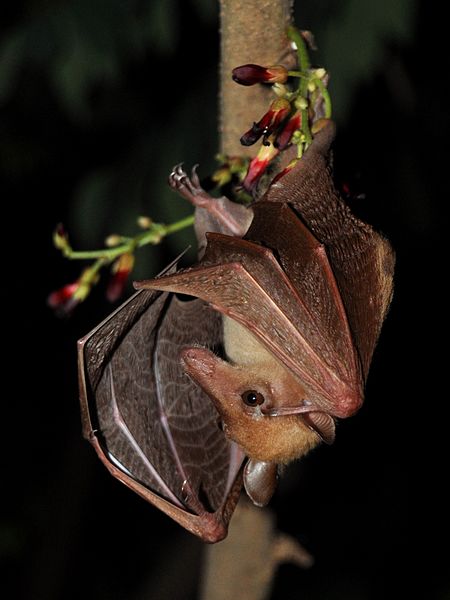
Wahlberg’s epauletted fruit bat – (Epomophorus wahlbergi)
- Size: 4.4 oz
- Location: Southern Africa
- IUCN Status: Least concern
- Coloration: Tan
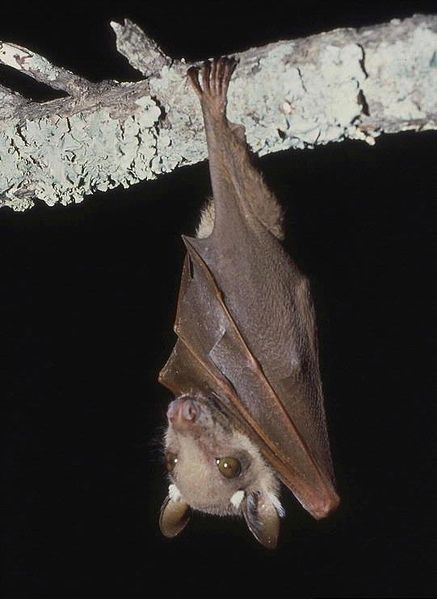
Fijian monkey-faced bat – (Mirimiri acrodonta)
- Size: 9.1 oz
- Location: Fiji
- IUCN Status: Critically endangered
- Coloration: Tan with orange eyes
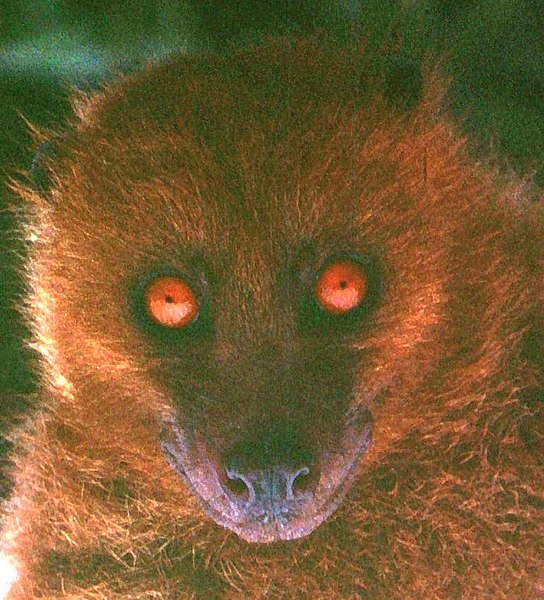
Lyle’s flying fox – (Pteropus lylei)
- Size: 11 oz
- Location: South Asia and China
- IUCN Status: Vulnerable
- Coloration: Black and brown with golden ruff
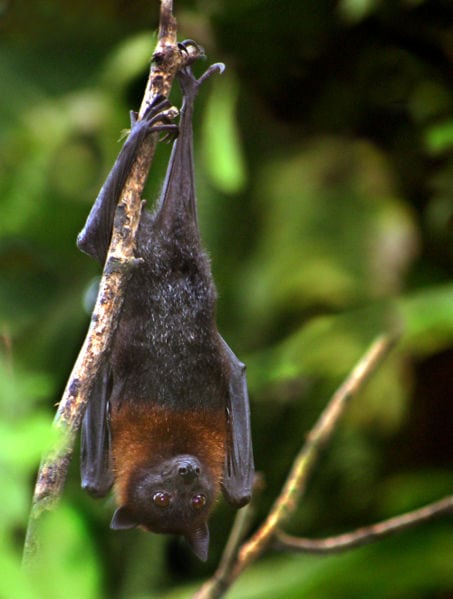
Straw-colored fruit bat – (Eidolon helvum)
- Size: 12 oz
- Location: Arabian Peninsula to sub-Saharan Africa
- IUCN Status: Near-threatened
- Coloration: Brown to tawny
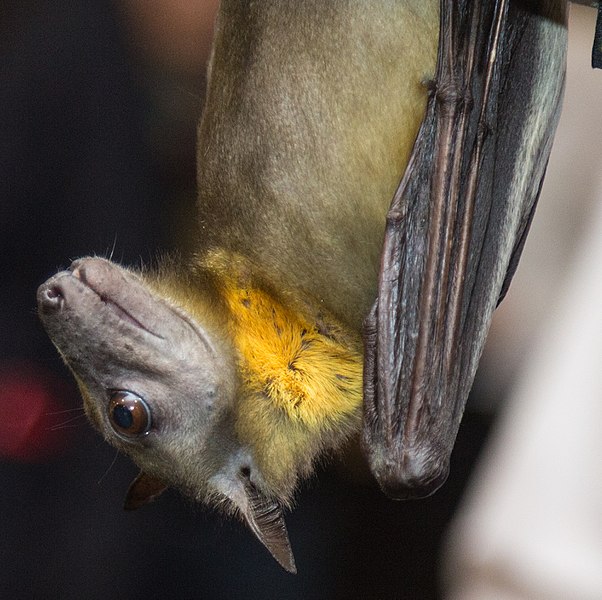
Mariana fruit bat – (Pteropus mariannus)
- Size: 16 oz
- Location: the Mariana Islands and Ulithi
- IUCN Status: Endangered
- Coloration: Black or brown with a golden ruff

Insular flying fox – (Pteropus tonganus)
- Size: 21 oz
- Location: Pacific Island
- IUCN Status: Least concern
- Coloration: Black with a yellow ruff
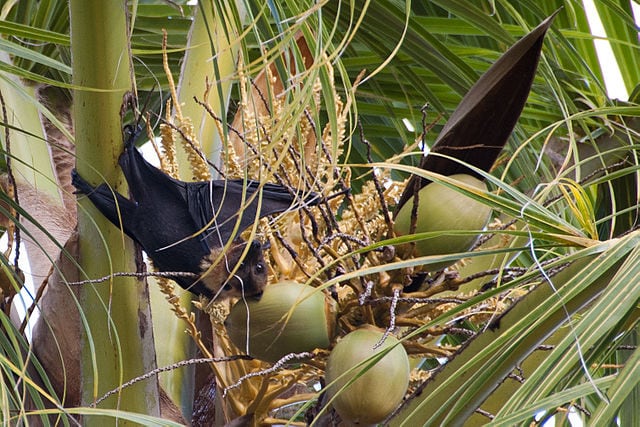
Sulawesi flying fox – (Acerodon celebensis)
- Size: 24.6 oz
- Location: Indonesia
- IUCN Status: Vulnerable
- Coloration: Golden brown
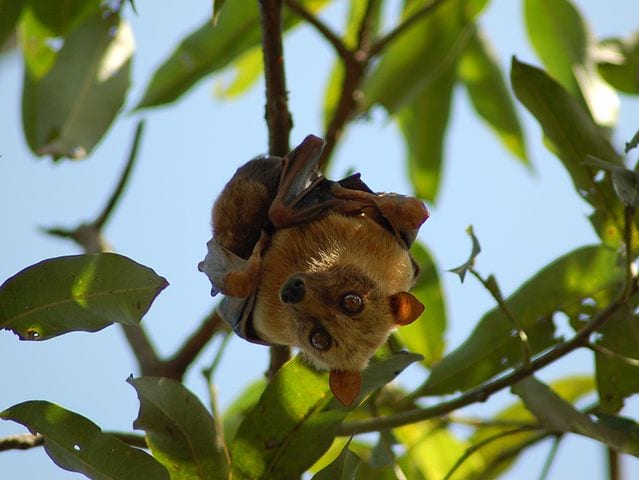
Livingstone’s fruit bat – (Pteropus livingstonii)
- Size: 28 oz
- Location: Anjouan and Mohéli islands
- IUCN Status: Critically endangered
- Coloration: Black with golden hairs
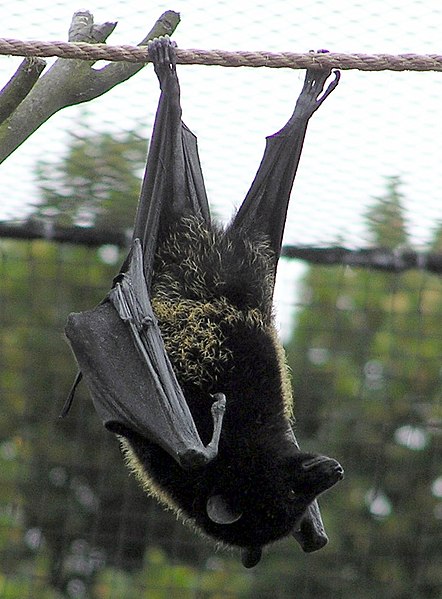
Giant golden-crowned flying fox – (Acerodon jubatus)
- Size: 49.6 oz
- Location: Philippines
- IUCN Status: Endangered
- Coloration: Reddish-brown and golden
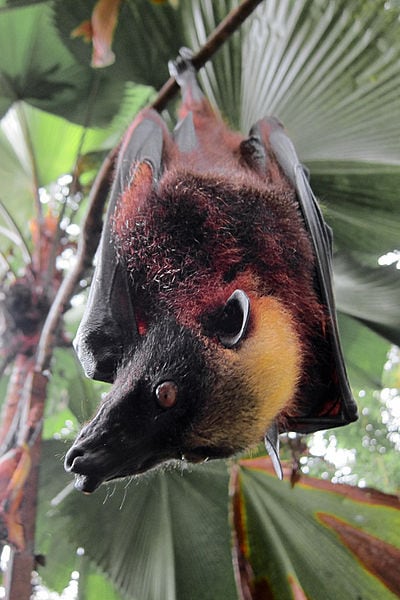
Conclusion
There are more than 1,100 species of bats in the world, and they come in all shapes and sizes. The 10 largest bats in the world are all flying foxes, a type of bat with large eyes and a dog- or fox-like face. The largest bat is the giant golden-crowned flying fox, which has a wingspan of up to six feet.
Other large flying foxes include the Philippine bare-backed fruit bat and the greater short-nosed fruit bat. All of these bats are found in Asia, where they play an important role in pollinating plants and dispersing seeds. While they may be big, these bats are also endangered due to habitat loss and hunting pressure.

